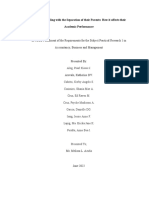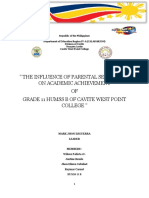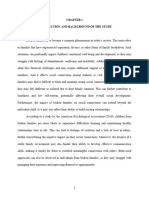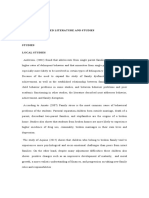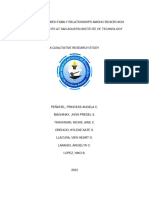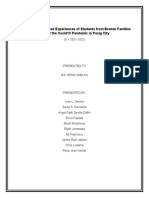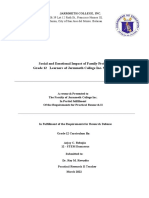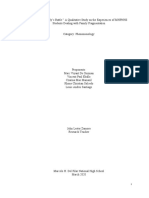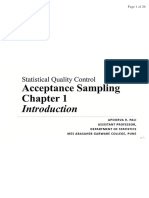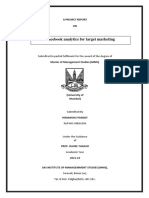0% found this document useful (0 votes)
1K views21 pagesResearch in Daily Life 2
Each year over a million Filipino children suffer due to the separation of their parents, separation that causes irreparable harm to all involved, but most especially to the children. The number of separated couples in Philippines is increasing, and public concern is growing about the consequences for children who experience this kind of change in their family life. This issue can affect the child in many aspects but the researchers focus on their academic performance.
Uploaded by
Elay RosalesCopyright
© © All Rights Reserved
We take content rights seriously. If you suspect this is your content, claim it here.
Available Formats
Download as DOCX, PDF, TXT or read online on Scribd
0% found this document useful (0 votes)
1K views21 pagesResearch in Daily Life 2
Each year over a million Filipino children suffer due to the separation of their parents, separation that causes irreparable harm to all involved, but most especially to the children. The number of separated couples in Philippines is increasing, and public concern is growing about the consequences for children who experience this kind of change in their family life. This issue can affect the child in many aspects but the researchers focus on their academic performance.
Uploaded by
Elay RosalesCopyright
© © All Rights Reserved
We take content rights seriously. If you suspect this is your content, claim it here.
Available Formats
Download as DOCX, PDF, TXT or read online on Scribd
/ 21


